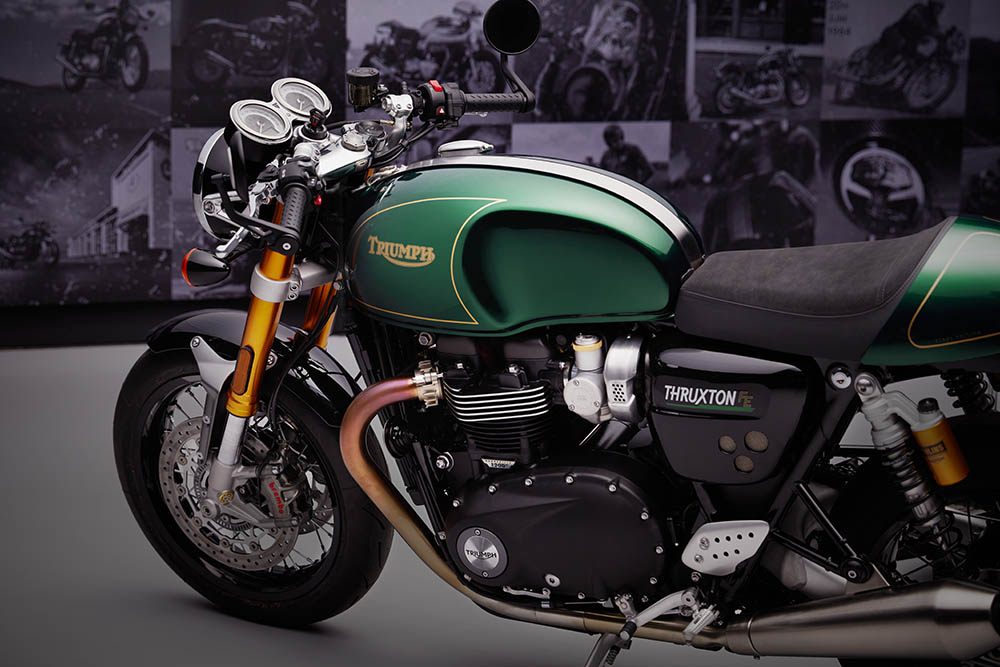Triumph has announced it will be pulling the plug on its sporty Thruxton model, with a limited run ‘Final Edition’ being introduced in the spring.
The modern day ‘Hinckley’ Triumph brought out the first Thruxton 900 in 2003. A racier version of the rebooted Bonneville, the 900cc parallel twin wowed riders of a certain age with its café racer looks and soulful sound. With some small changes, most notably an early switch from clip-ons to more comfortable ace bars, the model stayed in Triumph’s range until 2016, when it was replaced by the current 1200 model.
The model was named after the Hampshire racetrack where Triumph enjoyed great successes in the 1960s. The first Thruxton, the 1965 Bonneville Thruxton, was actually a limited edition ‘homologation special’ developed for production racing during Triumph’s Meriden era. Its successes included a podium lockout at the 1969 Thruxton 500 mile race, as well as setting the first 100mph lap by a production motorcycle at the Isle of Man TT.
In recent years the Thruxton has become more and more sophisticated, with the classic motorcycle styling belying its thoroughly modern technology. The Final Edition is based on the range topping Thruxton RS, which was first introduced in 2019, and features all the usual Triumph special edition features: fancy paint, gold coachlines, special badging and a certificate of authenticity. Priced at £15,095, £900 more than the RS upon which it is based, it is likely to be highly coveted by Triumph collectors.
Being a cosmetic project, mechanicals are all as per the RS, with the sweet sounding 105bhp 1200cc twin housed in a chassis featuring Showa big piston forks up front, twin Öhlins piggy-back rear shocks, high-spec Brembo M50 radial brakes and top notch Metzeler Racetec RR tyres.
The final edition comes in a ‘Competition Green’ livery with gold lining and an old school Triumph logo in the ‘60s style. Although it comes naked as standard, a matching half-fairing is available as part of Triumph’s comprehensive accessory range. Each bike comes with a certificate signed by Triumph boss Nick Bloor and the project design team, as well as an engine badge which Triumph say will be a great mantlepiece ornament.



